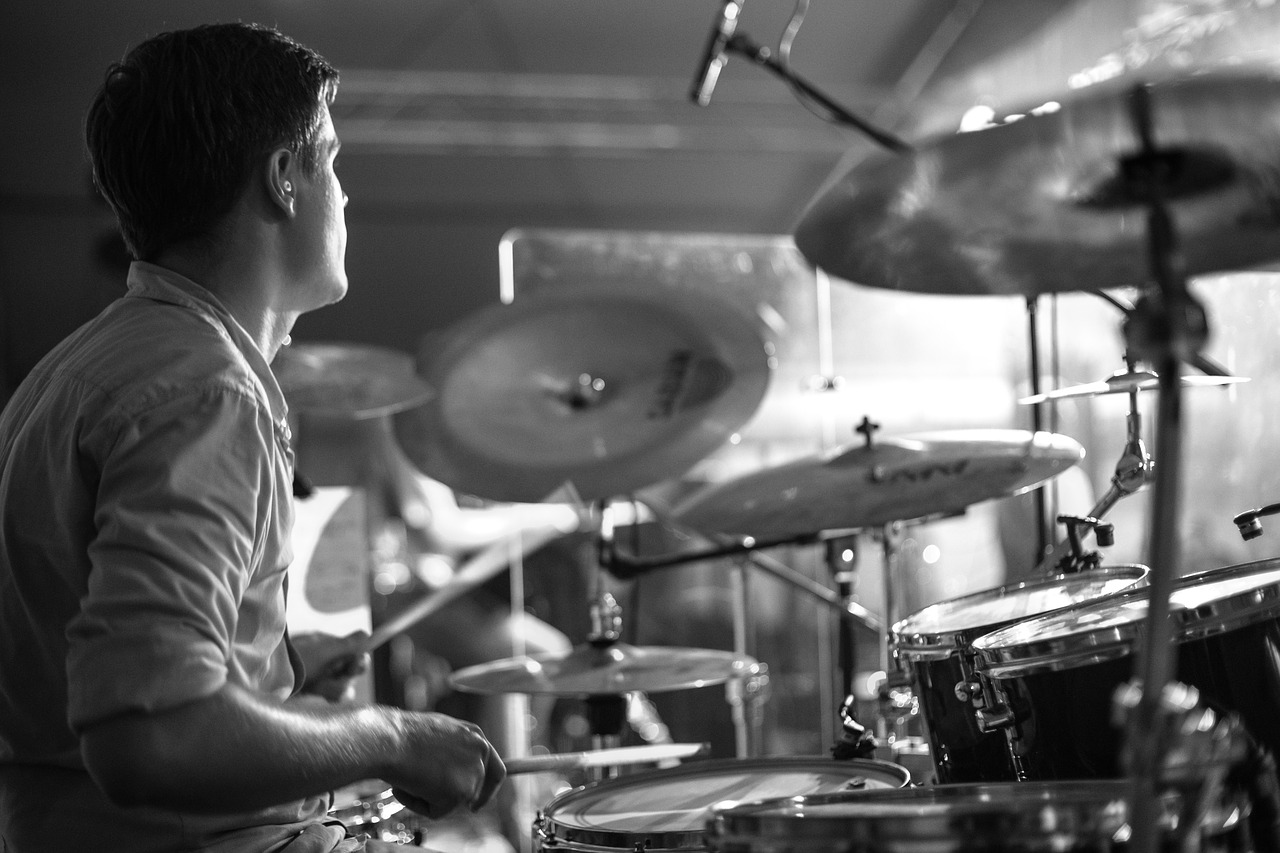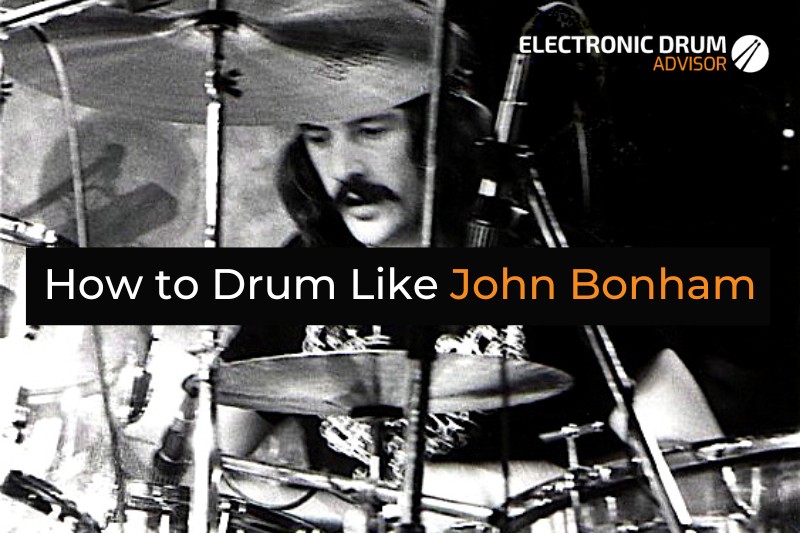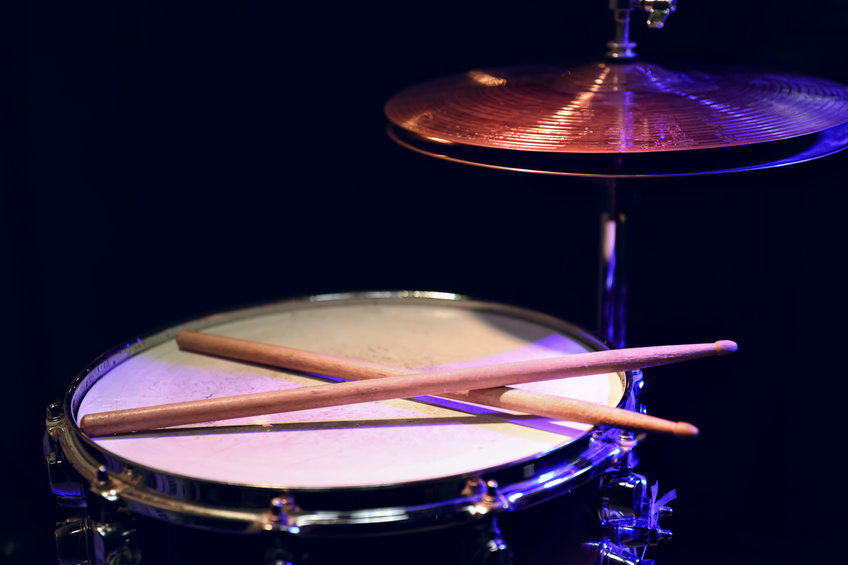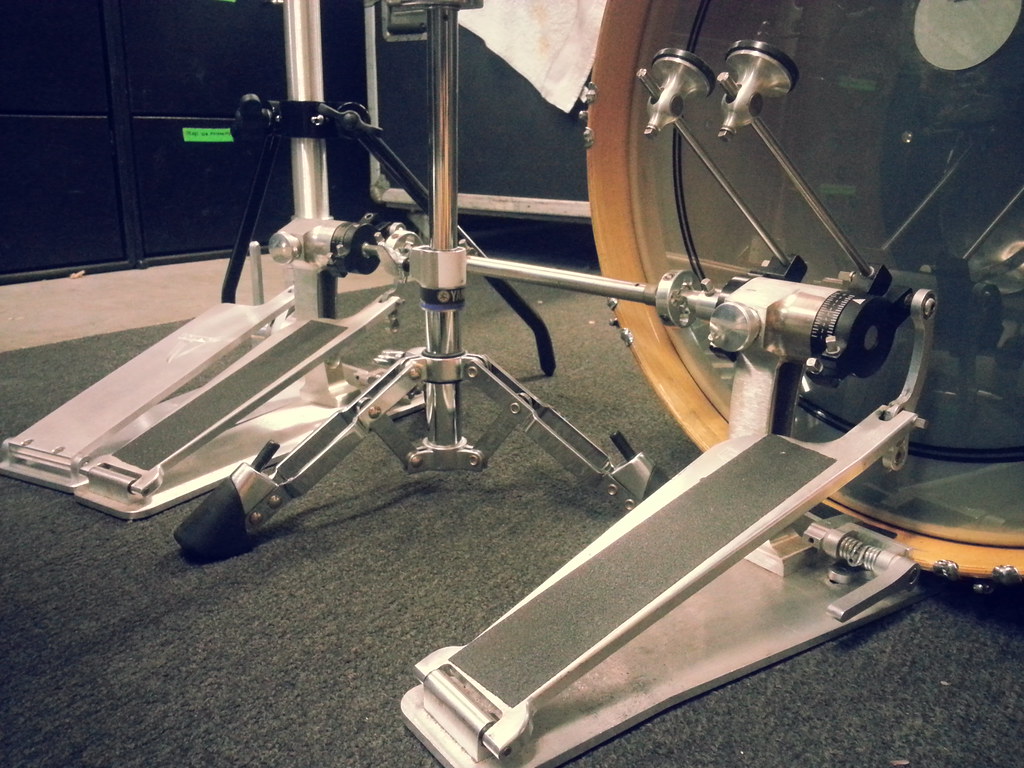10 Popular Drumming Styles and Genres

Learning to play different drumming styles is a great way to develop as a drummer. It can help you expand your horizons as a musician and push you outside of your comfort zone behind the kit.
Each drumming style has its own type of rhythm as the driving force. Latin music makes heavy use of Ostinato patterns on the bass drum, jazz drummers often use complex ride cymbal patterns, while metal drummers often go all-out on the double bass drums.
So, for your next practice session, play a genre you’re not familiar with. It may make you approach your practice from a completely different angle!
Contents
1. Rock Drumming
Rock is characterized by distorted electric guitars, straight 8th/16th note grooves with strong backbeats played on the snare drum on beats 2 and 4, and simple melodic and harmonic structures. Of course, that’s quite a simplification of the genre, but you’ll hear them all the time in rock music.
There’s a sense of rebellion and non-conformity associated with rock, which is why it initially attracted a younger audience. Rock drumming is extremely straightforward: loud and intense drum grooves with big fills that make a statement, quite true to the genre itself.
Some of the most famous rock drummers of all time include John Bonham (Led Zeppelin), Ginger Baker (Cream), Mitch Mitchell (Jimi Hendrix Experience), and Stewart Copeland (The Police), among others.
Rock music emerged from blues, gospel, and country music. Legends like Elvis Presley, Bo Diddley, and Chuck Berry drew from these genres to create a fresh sound.
Over time, rock developed subgenres such as surf, garage rock, blues rock, and progressive rock, to name a few. Regardless of the subgenre, the traits of instrumentation, song structure, melody, harmony, and rhythm can be traced back to the parent genre that started it all: rock n’ roll.
2. Jazz Drumming
Blues music is often called the precursor and the most important influence on jazz music. Blues served as a base on which jazz music would construct stylistic and aesthetic developments.
The practice of playing the drum set in jazz music started in Dixieland in the 1910s, to jazz fusion in the 1970s, and Latin jazz in the 1980s.
Jazz first started in New Orleans, the Caribbean, and Africa. One can see the influence of the music from that era even as jazz evolved further, incorporating key elements from different genres.
The most important aspect of jazz music is “swing,” which is primarily felt through the triplet subdivision. The characteristic “ting – ting – ta – ting” ride pattern is the guiding force that accentuates the “swing” element in jazz. This functions as a reference for the entire ensemble.
Jazz drumming requires an easily adaptable method of playing percussion, one that is quite different from the traditional European styles.
Jazz drumming continued to evolve through the 20th century; however, no style completely replaced others and there were numerous cross-influences between different styles.
Traditional jazz drummers relied heavily on military rudiments and beats initially. However, new techniques and better musicianship evolved with time. Jazz evolved into numerous sub-genres such as bebop, free jazz, Latin jazz, and modern jazz. While all these take from the traditional aspects of jazz music, they have their distinguishing features as well.
Some of the most influential jazz drummers are Max Roach, Kenny Clarke, Philly Joe Jones, Jimmy Cobb, Warren Baby Dodds, Papa Jo Jones, buddy rich, and Elvin Jones. Even though most of these drummers have passed on, their contribution to the world of jazz music still continues to inspire not only young, budding musicians but established living legends as well.
3. Pop Drumming
Simple song structures, easy-to-sing melodies, straight 8th and 16th-note drum grooves, and simple, yet effective, lyrics make most of what pop music is. A typical pop song usually follows an intro-verse-chorus-outro structure with subtle variations happening sometimes. Normally, the verse and chorus sections alternate and are repeated twice or three times.
While pop drumming is often very simple, there are subtle aspects that need to be kept in mind. Precision and accuracy are indispensable. Pop drummers need to be exceptionally tight to the metronome.
Pop music basically means “popular music.” A lot of the same rules as rock music also hold true for pop. However, the subtle differences that are there involve differences in sound. A pop drum sound can also tend to be heavily produced, which is achieved with the use of triggers and samples.
4. Electronic Drumming
There are many different electronic music styles, such as techno, trance, house, drum and bass, dubstep, and much more.
Each of these styles has its own signature rhythm. Many of them use “four on the floor” rhythms, but genres such as drum and bass use breakbeat rhythms that sound very different from this.
Although electronic music producers generally use DAWs or drum machines to lay down their drum tracks, drummers are often called on for their presence and sound in live performances.
There is extensive use of drum triggers and samples in electronic drumming. A lot of drummers have pioneered the use of electronics in their acoustic setups which has paved the way for an exciting new sound. Check out this great Drumeo video by Michael Schack.
5. Latin Drumming
Some common forms of music broadly classified under Latin music are salsa, samba, bossa nova, rhumba, Afro-Cuban, and Brazilian. The biggest difference between a simple drumming style like rock/pop and Latin is the feel.
This may also end up becoming a huge challenge for someone who is too accustomed to playing rock. This is because most forms of Latin music are centered around the clave. The clave is a characteristic rhythm found in Latin music that governs the entire ensemble.
Moreover, instead of playing a straightforward groove on the snare, bass, and hi-hat, Latin music is extremely free-floating and moves between subdivisions quite fluidly.
It also involves the use of percussion such as timbales, congas (tumbadoras), bongo, cowbells, jam blocks, and wood blocks. Latin drumming relies heavily on four-way independence. It is quite incredible how drummers can achieve exceptional independence.
You can check out Latin drummers such as Dafnis Prieto, Horacio El Negro Hernandez, Keiko Fritas, and Ignacio Berroa for inspiration.
6. Funk Drumming
Fills give you thrills but grooves pay the bills. Funk music is all about the groove.
Funk is a mixture of soul, jazz, and blues music. Funk was one of the first genres to emphasize rhythm more than melody or harmony. Funk music is characterized by elements such as slap bass, guitar effects such as wah-wah, horns, and syncopated drum rhythms.
Funk drumming encompasses a variety of concepts that have been incorporated into other drumming styles for taste. Some key features of funk drumming are syncopation, rhythmic displacement, hi-hat licks, ghost notes on the snare, and linear patterns played around the kit between the hands and feet.
Quite unlike rock and pop drumming, certain situations in funk involve heavily syncopated grooves.
Some of the most famous funk grooves worth checking out are “Cissy Strut” by The Metres, “Funky Drummer” by James Brown, and “Soul With A Capital S” by Tower of Power. Listening to funk drummers is essential to get a sense of the pocket that they feel.
Some notable names are Bernard “Pretty” Purdie, Clyde Stubblefield, David Garibaldi, Mike Clark, Dennis Chambers, Steve Jordan, and Steve Gadd.
Funk originated in the mid-1960s in the United States. One of the most influential funk musicians was James Brown.
7. Metal Drumming
Drum speed, power, and precision are the Holy Trinity of heavy metal drumming. The entire band depends on the drummer for that. A major difference between metal drum kits and kits specific to other genres is the sheer size of the former.
Heavy metal music is characterized by a loud, aggressive performance, growling vocals, emphatic rhythms, and a dense guitar, bass, and drum sound.
Metal drummers often have large drum kits, not only in terms of size but also in terms of sound. Two main features of drumming originated from metal and were later used in various other forms of music: the use of double bass drums and the cymbal choke.
Metal drumming requires an extremely high amount of endurance, speed, coordination, and precision. The grooves and fills used in metal are quite intricate and hard to play tight.
Since metal drumming is so demanding, it is imperative to start slow and develop the proper technique to avoid hurting oneself. Metal drumming can be classified into various subgenres, including death metal, thrash metal, black metal, and doom metal.
Some incredible metal drummers worth checking out are danny carey (Tool), Chris Adler (Lamb of God), Mike Portnoy (Dream Theatre, Liquid Tension Experiment, Avenged Sevenfold, and The Winery Dogs), and Lars Ulrich (Metallica).
Metal drumming is the heavier counterpart of rock drumming. It came into its own in the late 1960s and 1970s primarily in the UK and USA.
8. Punk Drumming
Punk rock drumming can be thought of as something close to hard rock drumming but played faster. As rock music took off in the 1970s, its rebellious counterpart began to rise in Australia, the United States, and the United Kingdom.
Political lyrics, fast tempos, short durations, and minimal instrumentation govern punk music. A typical punk song will consist of one or two electric guitars, a bass, drums, and vocals. Even though there isn’t a lot of intricacy in this musical style, punk music can be broken down into different subgenres like hardcore punk, crust punk, and ska-punk.
An authentic punk rock drum sound is characterized by snares on all the upbeats (the “ands”) played as loud accented strokes or rim shots, fast doubles on the bass drum, and trashy open hi-hats. Some noteworthy punk rock bands are the Ramones, the Sex Pistols, Black Flag, The Clash, and NOFX.
9. Reggae and Ska Drumming
Played with the right amount of feel, precision, and tightness, reggae grooves are really fun to listen to. There are a lot of subtle details and variations that make up reggae grooves, which is what makes them challenging to play.
Not unlike other genres, reggae can also be classified into different subgenres which helps in developing a continually evolving vocabulary of rhythms and variations to explore with. Some of the most common reggae rhythms are ska/rocksteady, one drop, rockers, and steppers.
Reggae drumming is precise and to the point. The job of the drummer is to keep a tight, steady groove that needs to be supported by the bass player. Together they lay the foundation for the remaining rhythm section, the guitar, and the keyboard.
Ska is a form of reggae music that originated in Jamaica in the 1950s. It can be understood as a blend between American rhythm and blues and Caribbean styles like calypso and mento. There are two distinct types of ska: Jamaican ska and the British two-tone ska.
A typical ska groove will have accents on the upbeats, rests on the first beat of the bar and the snare and the bass plays in unison on beats 2 and 4. A few noteworthy reggae drummers are Sly Dunbar, Santa Davis, Nelson Miller, and Carlton Barrett.
10. Swing and Shuffle Drumming
The way I like to think about shuffle and swing when comparing the two is that swing is a concept and shuffle is a style. Shuffle grooves usually have triplets played on the ride or hi-hats. It is this triplet feel that makes it swing hard. That’s how we can understand swing to be a concept used in the shuffle groove.
It is important to count this beat in the right manner before playing it to really internalize the feel. One can start by counting TRIP-uh-LET, TRIP-uh-LET, TRIP-uh-LET, TRIP-uh-LET, and so on.
An ideal way to start is to practice on the pad before taking it on the kit. Once familiarised, it can be translated to the hi-hat or the ride while the kick plays either all four quarter notes or beats one and three.
In a shuffle groove, the kick is normally the instrument that undergoes variations whereas the ride/hi-hat and the snare play the shuffle ostinato which keeps the groove going. A few really groovy drummers that come to mind are Steve Gadd, Bernard “Pretty” Purdie, Steve Jordan, James Gadson, and Benny Greb.
Notable Mentions
Country Drumming
Country music drumming involves controlling the dynamics when playing the beat. It’s usually a very straightforward time signature and the predominant use of the ‘train beat’. The ‘train beat’, as the name suggests, is meant to mimic a train sound. This is done by playing quarter notes on the bass drum and constant/controlled hits on the snare drum.
Caribbean Drumming
Although it has syncopated patterns and rhythms comparable to Latin drumming, Caribbean drumming contains beats such as Calypso, soca, and zouk. Calypso rhythms are distinguished by the use of a steel drum as its characteristic sound. Soca is a highly syncopated beat that is closely related to Calypso. And zouk is a type of electronic-based sound that mimics drum machines.
Blues Drumming
Even though we mention Blues as the foundation of Jazz drumming, Blues drumming is also quite distinct in that it involves a steady, syncopated beat meant to be improvised over. The majority of blues beats follow a basic 12/8 rhythm, with four beats consisting of three eighth notes each. That corresponds to twelve hi-hats in a bar and your bass drum on the second and fourth beats. The most important part, however, is the overall feel when you’re playing.
Conclusion
It’s really great to learn to play lots of different drumming styles because it expands your horizons as a drummer. Playing different styles pushes you out of your comfort zone, which can help you improve your coordination, musicality, technique, music notation reading skills, and much more!
Knowing how to play lots of different styles could also make you much more in demand as a drummer, as you will be able to play in a lot more musical situations.
Of course, this is not a definitive list. That said, many other styles that you come across may be subgenres of the ones listed above. Use this list as a starting point and be sure to check out some of the names of drummers and bands above, as they serve as some great inspiration to help you dig deeper into these drumming styles.








educative